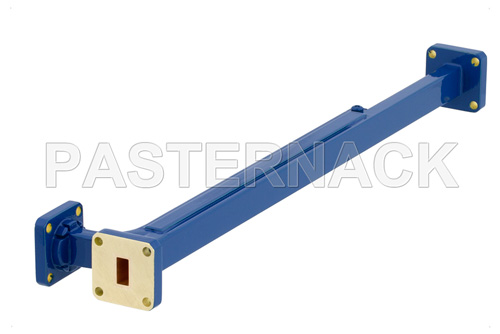 Depending upon the frequencies, power levels, and physical requirements, either coaxial or waveguide interconnects are used for high power RF and Microwave applications. Both technologies vary in size as a function of frequency and require higher precision materials and manufacturing processes to handle higher power levels. Generally, as a product of the way the RF energy is carried through a waveguide with an air dielectric, waveguides tend to be able to handle higher power levels than comparable coaxial technologies. On the other hand, waveguides are usually a more expensive, custom installed and a narrower band solution than coaxial technologies.
Depending upon the frequencies, power levels, and physical requirements, either coaxial or waveguide interconnects are used for high power RF and Microwave applications. Both technologies vary in size as a function of frequency and require higher precision materials and manufacturing processes to handle higher power levels. Generally, as a product of the way the RF energy is carried through a waveguide with an air dielectric, waveguides tend to be able to handle higher power levels than comparable coaxial technologies. On the other hand, waveguides are usually a more expensive, custom installed and a narrower band solution than coaxial technologies.
This being said, if your application requires lower cost, higher flexibility installation, greater signal routing density and medium power levels, then coaxial technologies may be the preferred choice. Additionally, there are a greater selection of components that use coaxial interconnects over waveguide interconnects due to reduced cost and size. Though broadband is generally a more straightforward installation, where high performance, ruggedness, and reliability are concerned, waveguide technologies tend to exceed coaxial. Often, these interconnect technologies are used in tandem, where the highest power and fidelity signals are routed through waveguide interconnects, when possible.
An important feature to note with coaxial technologies, is that their power and voltage related dielectric breakdown is much lower than waveguide interconnects at similar frequencies. This may be acceptable if weight and cost are high concerns. Though, issues with material out gassing and material performance changes at high temperatures and pressures may reduce coaxial technologies viability in aerospace applications.




 Pasternack Blog
Pasternack Blog
